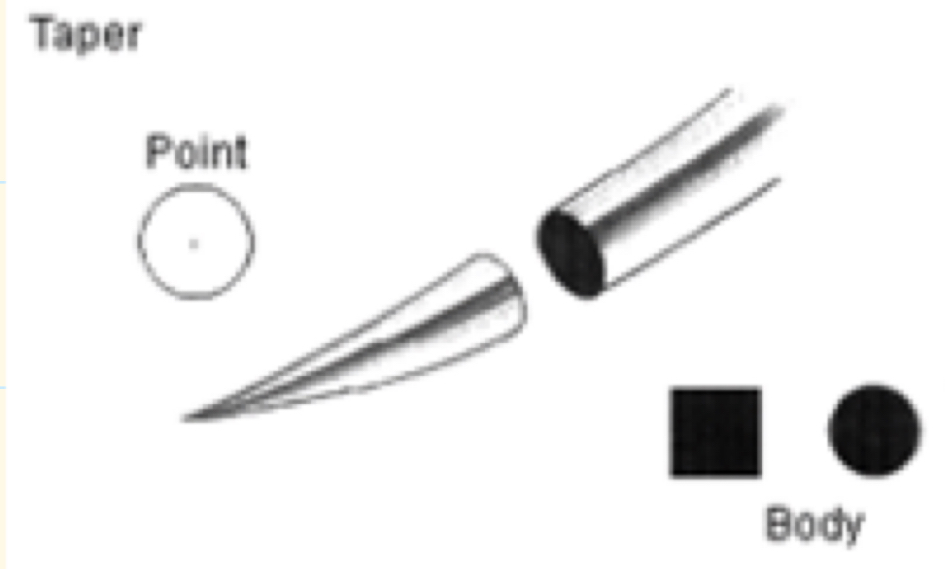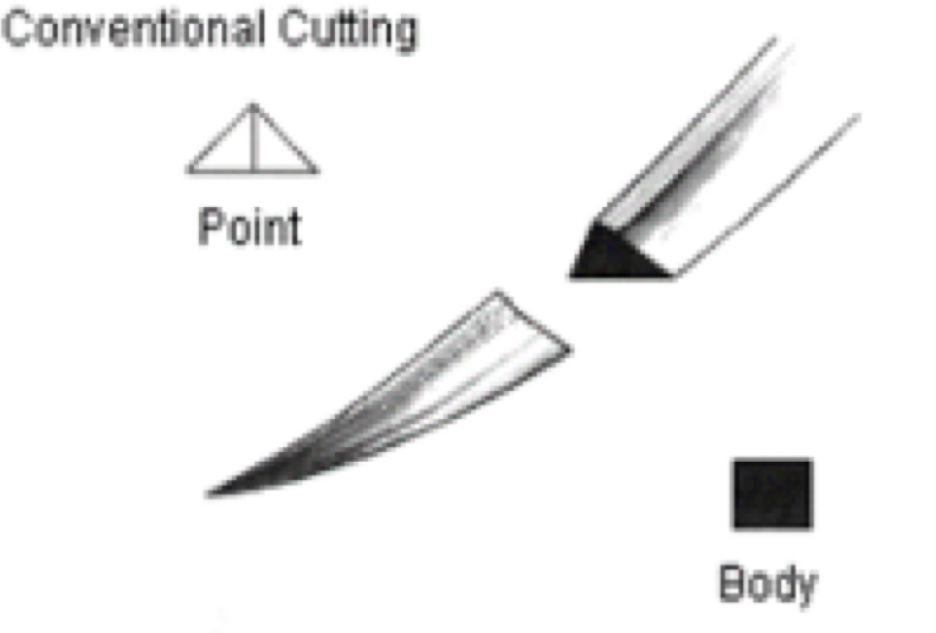Week 8 - suture materials
1/67
There's no tags or description
Looks like no tags are added yet.
Name | Mastery | Learn | Test | Matching | Spaced |
|---|
No study sessions yet.
68 Terms
What are the 7 terms for suture materials?
Synthetic - natural
Monofilament - multifilament
Absorbable - non-absorbable
Tensile strength
Memory
Tissue drag
Hydrolysis - enzyme digestion
Synthetic - natural
Either man made or made of a natural material
Monofilament - multifilament
One strand vs many strands braids together
Absorbable - non-absorbable
Suture material is considered non-absorbable if it retains tensile strength after 1 year
Tensile strength
Maximum pressure that can be applied to suture
Memory
Holds shape = high memory
Doesn’t hold shape = low memory
Tissue drag
Suture material can snag as it drags through tissue
Hydrolysis
Less reaction and passive so water dissolves material
Enzyme digestion
Active inflammation process so enzymes can break down the material
Name 3 absorbable suture materials
Catgut, Vicryl/Polysorb, Monocryl/PDS
Is catgut synthetic or natural?
Natural - ruminate intestine
Is catgut absorbable or non-absorbable
Absorbable
How is catgut broken down?
Enzymes
What are the 2 varieties of Catgut
Chromic and plain
What is the tensile strength of chromic catgut?
21-28 days
What is the tensile strength of plain catgut?
10-14 days
Should you use chromic or plain catgut?
Chromic since plain looses tensile strength in 10-14 days when sutures are supposed to be taken out
When would catgut be used?
Mainly farm as its low expense
Is vicryl/polysorb synthetic or natural?
Synthetic
Is vicryl/polysorb absorbable or non-absorbable?
Absorbable
Is vicryl/polysorb monofilament or multifilament?
Multifilament
How is vicryl/polysorb broken down?
Hydrolysis
What is vicryl/polysorb have tensile strength?
High tensile strength
What is the tissue drag of vicryl/polysorb?
Less drag due to coating
What is the wicking/capilliarity of vicryl/polysorb?
High = bacteria going into braiding
What is the absorbable time for polysorb?
Fully absorbed in 56-70 days
What is the absorbable time for vicryl?
Fully absorbed in 60-90 days
Is PDS/Monocryl synthetic or natural?
Synthetic
Is PDS/Monocryl absorbable or non-absorbable?
Absorbable
Is PDS/Monocryl monofilament or multifilament?
Monofilament
How is PDS/Monocryl broken down?
Hydrolysis
What is the tissue drag on PDS/Monocryl?
Low tissue drag
What is the memory of PDS/Monocryl?
Low memory
What is the knot security of PDS/Monocryl
Fair
What is the wicking of PDS/Monocryl?
Low capillarity/wicking
What is the tensile strength of PDS?
Reduced to 70% after 14 days
What is the tensile strength of Monocryl
Reduced 30-40% after 14 days
What is the absorption of PDS?
Fully absorbed by 180 days
What is the absorption of Monocryl?
Fully absorbed by 90-120 days
What wounds are PDS/moncryl good for?
Infected wounds
What are 2 non-absorbable materials?
Nylon and Prolene
What are the two types of nylon?
Supramid and Ethilon
Is Nylon/Prolene synthetic or natural?
Synthetic
Does Nylon/Prolene have memory?
Yes high memory
What is the tensile strength of Nylon/Prolene
Indefinite
What is the knot security of Nylon/Prolene
Fair knot security
Is nylon monofilament or multifilament?
Either;
Ethilon is monofilament
Supramid is mono and multifilament
Is Prolene monofilament or multifilament
Monofilament
What nylon filament has a lower tissue drag and a low capillarity?
Monofilament
When to use non-absorbable suture materials?
Skin sutures
Tie back surgery
The wicking effect
Occurs when fluid is drawn into the suture material from the environment or surrounding tissues
What will wicking cause?
Surgical site infections as fluid might contain bacteria
What is the suture material sizing?
Ph. Eur or Metric
What does Ph. Eur or Metric mean?
European Pharmacopoeia
What is 3-0 equivalent to in metric?
2 metric
What is 2-0 equivalent to in metric?
3 metric
What are the three types of needles?
Round bodied
Taper Point
Cutting needles
What are the two types of cutting needles?
Conventional cutting and reverse cutting
Round bodied
Designated to separate tissue fibres rather than cut them, used for friable tissue
Taper point
Gradually broadens from the tip to allow greater separation of the tissues

Cutting needles
Cut through tissue, used for dense tissue e.g. skin
Conventional cutting
Cutting edge on the inside edge of the needle

Reverse cutting
Cutting edge on the outside edge of the needle
When would a conventional cutting needle be better?
Large animal
When would a reverse cutting needle be better?
Small animal and equine
What are surgical staples are normally made of?
Stainless steel or titanium
What are benefits of staples?
Rapid placement
Low tissue reaction - efficient healing
Strong wound closure - appropriate for wounds under tension
Considerations of staples
Must be removed
Can increase scarring due to less accuracy with tissue alignment